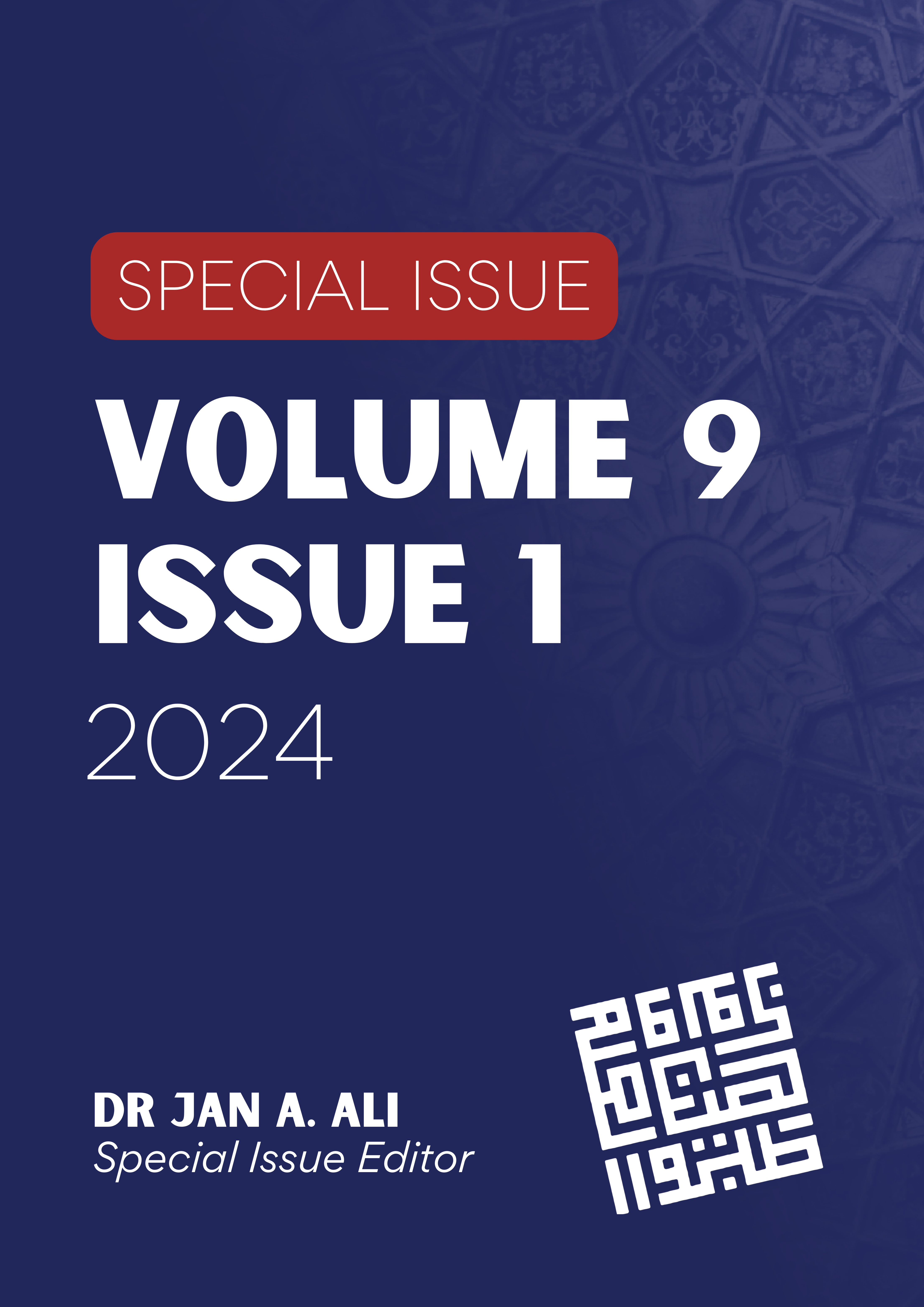Revisiting the Crucifixion of Jesus within Islam

Abstract
This article demonstrates that Muslim teachings on the historical crucifixion event of Jesus are by no means monolithic. While the Qur’ān’s reference to the crucifixion has typically been interpreted as fostering explicit rejection of the belief that Christ was crucified, its meaning on this issue constitutes neither denial nor affirmation of its historicity. Over time, discussion of the crucifixion within the Islamic tradition was formed to accommodate a rejection that obscured the neutrality of the original Qur’ānic position. One school of Islamic thought which affirmed the historicity of the crucifixion on a Qur’ānic basis is the tradition of Shi’a Isma’ili Islam. This article focuses on the conceptualisation of the crucifixion within Isma’ilism and its connection with Sunnism. From the Isma’ili perspective, the Qur’ān does not deny the crucifixion of Jesus; rather, it only denies that the People of the Book crucified him, in apparent response to their boasting. The ambiguity of Surah 4:157 remains a vigorous debate among classical and later Muslim scholars with references to the crucifixion as preserved in early and medieval literature furnishing distinctively divergent accounts of its unfolding. Even classical scholars such as al-Ghazali were persuaded by the views about the crucifixion expressed by leading Isma’ili thinkers such as Abu Ḥatim al-Razi (d. 934 CE) and Naṣir Khusraw (d. 1078 CE). Ultimately, the objective of this article is twofold: to demonstrate that the Qur’ān offers a neutral account of the crucifixion and to examine Shi’ite exegetical analysis on the crucifixion event in contrast to mainstream Islam.
Keywords
Islamic crucifixion, Jesus in Islam, Qur'an on crucifixion
References
- Al-Ṭabāṭabā’ī, al-Sayyid Muḥammad Ḥusayn. al-Mizān fī tafsīr al-Qur’ān [The Balance in Interpretation of Qur’ān]. 14 vols. Beirut: al-A’lamī li al-Maṭbū’āt, 1390/1970.
- Andani, Khalil. “They Killed Him Not”: The Crucifixion in Shi’a Isma’ili Islam.
- The Matheson Trust, 2011. https://www.themathesontrust.org/papers/islam/andani-crucifixion.pdf.
- Aslan, Reza. Beyond Fundamentalism: Confronting Religious Extremism in the Age of Globalization. Random House Trade Paperbacks, 2010.
- As-Suduq. Al-Khisal: A Numeric Classification of Traditions on Characteristics. Translated by Ali Peiravi and Talat June Peiravi. Al-Islam, 2008.
- Ayoub, Mahmoud. The Qur’ān and its Interpreters. Islamic Book Trust, 2013.
- Ayoub, Mahmoud. “Towards an Islamic Christology, II: The Death of Jesus, Reality or Delusion.” The Muslim World 70, no. 2 (1980): 104. DOI: https://doi.org/10.1111/j.1478-1913.1980.tb03405.x
- Chittick, William. The Sufi Doctrine of Rumi. World Wisdom, Inc, 2005.
- Daftary, Farhad. The Isma’ilis: Their History and Doctrines. Cambridge University Press, 1992.
- Dimansa, Andi Hendra. “Ahmadiyya in Islam: teachings and developments.” Texas Journal of Multidisciplinary Studies 6 (2022): 45-56.
- Dirks, Jerald. The Cross & the Crescent: An Interfaith Dialogue between Christianity and Islam. Amana Pub., 2001.
- Esposito, John, ed. The Oxford Dictionary of Islam. Oxford University Press, 2004.
- Grant, Michael, trans. Tacitus: The Annals of Imperial Rome. Penguin Classics, 1989.
- Ibn Hazm and Abu Muhammad Ali Bin Ahmad. Kitab al-Fasl fi al-Milal wa al-Ahwa’wa al-Nihal [The Book of Sects and Creeds]. Egypt: Matbaa al-Adabiyya, 1900.
- Hollenberg, David. “Interpretation after the End of Days: The Fatimid-Isma’ili Ta’wil (Interpretation) of Ja’far ibn Mansur al-Yaman (d. ca. 960).” PhD diss., University of Pennsylvania, 2006.
- Hossein, Seyyed Nasr. Islamic Life and Thought. The Other Press, 1981.
- Ibn Kathir. Tafsir Ibn Kathir. Translated by Muhammad Nasiruddin al-Albani. Darussalam Publishers, 2003.
- John of Damascus. Writings: The Fathers of the Church, Vol. 37. Translated by Frederic H. Chase Jr. The Catholic University of America Press, 2010.
- Josephus, Flavius. The Antiquities of the Jews. Translated by William Whiston. Books on Demand, 2018.
- Lawson, Todd. The Crucifixion and the Qur’ān: A Study in the History of Muslim Thought. Simon and Schuster, 2014.
- Lazarus-Yafeh, Hava. Studies in al-Ghazzali. Jerusalem: The Magnes Press, 1975.
- Al-Majlisī, Muḥammad Bāqir. Biḥār al-nwār al-Jāmiʿahli-Durar Akhbār al-Aʾimmat al-Aṭhār [The Oceans of Lights: A Compendium of the Pearls of the Narrations of the Pure Imāms]. Beirut: Muʾassasat al-Wafāʾ, 1983.
- Mevorach, Ian. “Qur’an, Crucifixion, and Talmud: A New Reading of Q4:157-58.” The Journal of Religion & Society 19 (2017): 7.
- Murata, Sachiko. The Tao of Islam: A Sourcebook on Gender Relationships in Islamic Thought. State University of New York Press, 1992.
- Nasr, Vali. The Shia Revival: How Conflicts within Islam will Shape the Future. WW Norton & Company, 2007.
- Nomoto, Shin. “Early Ismā’īlī Thought on Prophecy According to the Kitāb Al-Islāh by Abū Hātim Al-Rāzī (d. ca. 322/934-5).” McGill University, 2002.
- Qummi, Abbas. Mafatih al-jinan [A Treasury of Islamic Piety]. Tehran: Kitabfurushilslami, 2002.
- Ramadan, Tariq. In the Footsteps of the Prophet: Lessons from the Life of Muhammad. Oxford University Press, 2007.
- Reynolds, Gabriel Said. “The Muslim Jesus: Dead or Alive?” Bulletin of the School of Oriental and African Studies 72, no. 2 (2009): 237-258. DOI: https://doi.org/10.1017/S0041977X09000500
- Robinson, Neal. Christ in Islam and Christianity. Albany, N.Y.: State University of New York Press, 1991. DOI: https://doi.org/10.1007/978-1-349-11442-9
- Saeed, Abdullah. Islamic Thought: An Introduction. Routledge, 2006. DOI: https://doi.org/10.4324/9780203015247
- Sahas, Daniel. “Book Review: Neal Robinson, Christ in Islam and Christianity (Albany: State University of New York Press, 1991). Pp. 246.” International Journal of Middle East Studies 25, no. 1 (1993): 168-169. DOI: https://doi.org/10.1017/S0020743800058359
- Schäfer, Peter. Jesus in the Talmud. Princeton University Press, 2009. DOI: https://doi.org/10.1515/9781400827619
- Walker, Paul. The Wellsprings of Wisdom: A Study of Abu Yaqub al-Sijistani’s Kitab al-Yanabi: Including a Complete English Translation with Commentary and Notes on the Arabic Text. Salt Lake City: The University of Utah Press, 1994.
- Webb, Abu-Isa, Aaron Wannamaker and Hisham Sharif, eds. The Clear Qur’ān: A Thematic English Translation of the Message of the Final Revelation. Book of Signs Foundation, 2016.
- Wheeler, Brannon, ed. Prophets in the Qur’ān: An Introduction to the Qur’ān and Muslim Exegesis. A&C Black, 2002.